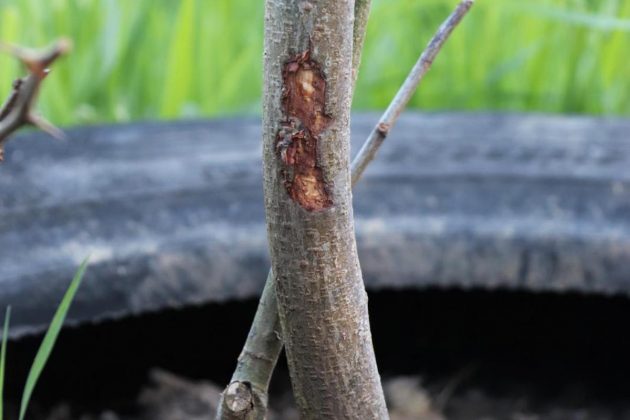Don't underestimate the power of the rabbit, warns Willy Newlands
“How to stop rabbits eating trees is like adopting the mantle of Mr McGregor” a forestry expert once explained to me. “If you want your own patch of woodland, you will find that buying the trees is the easy bit. Guarding them is what takes time and money.”
Let’s do the maths.
- A broadleaf sapling 50p
- A plastic tree guard £1
- Timber stake 50p
- Roe deer guard £1.50
- Stock fencing the site £4 a metre. Say a broadleaf sapling costs 50p.
Not including the stock fencing that’s around £3 for starters. For just a sapling.

The rabbits are ready and waiting
The enemy rabbit
I was once asked, “do rabbits eat trees?” Oh yes indeed. The enemy is ready and waiting and there were around 37.5 million at the last count. (Source GWCT.) Where bunnies break through the defences, the effect can be disastrous. So how do you stop rabbits eating trees? (Read how to keep rabbits out of your garden.)
A few years ago we had a floor, which smashed down the doors into our two-acre walled garden. Rabbits got in but we assumed that they could be controlled easily once the doors were back in place. However, the repairs took some time and meanwhile the invading rabbits dug their way under the old greenhouses and a summer-house. Young rabbits began to appear.
The damage over the winter was devastating. Fruit trees, young and old, were rapidly ring-barked and all sorts of “rabbit proof” plants were soon being chewed down to ground level: yuccas, fatsias, hellebores, kniphofias, bamboo, privet were all destroyed. The situation of the garden made it impossible to use gas to control the pests, so most of the counter-attack depended on some ferreting and a lot of evening shoots. The tally so far is 72 rabbits shot on two acres, and I think there are still half a dozen inside the walls.
This year’s fruit crop – apples and plums – was a total failure. There was blossom and a lot of fruit was set but nothing developed. Tiny apples and plums fell in drifts under the dying trees along the walls. A much-loved garden has become a sad sight.
How to stop rabbits eating trees
We shall not underestimate the power of the rabbit in future. Every new tree will be safe inside a plastic tree shelter and behind a mesh fence. And out in the wider garden beyond the walls, where roe are a problem (both browsing and fraying), we shall be erecting taller defences. Black plastic guards of square mesh, 1.2 metres high, will help prevent too much damage to our bigger trees.
Tubes are a good way of spending some of the landscaping budget, anyway, often doubling the speed at which saplings put on height and girth. The effect is much more pronounced with broadleaved trees. Conifers do better inside a less-cosseting protection of open mesh. We were tempted in the early stages of developing our landscape to buy specimen trees, which promised to create an effect much more quickly than small transplants. This was an expensive miscalculation.
Thirty years of struggle with cold winds and cloudy summers has proved that a wee tree, comfortable inside a tube, is going to outperform any man-sized sapling, which often lives but rarely thrives. And over the years you will find that your list of favourite trees is likely to change dramatically. In my case, Norway maples and some willows have slipped off the list while the Italian alder has proved to be a superstar, taller and more robust than almost any other broadleaved tree we can grow, while keeping every leaf on its wide-sweeping lower branches.
Best conifer is still the much-maligned Leyland cypress – in the right place it is big and beautiful and wonderfully hardy.
The tree rabbits ignore

Mature Leylandii are not to rabbits’ taste.
One doesn’t need to worry about how to stop rabbits eating trees when there are mature Leyland cypress. Worth noting is the fact that rabbits ignore mature Leyland cypress but will maliciously destroy young transplants, so they do need a hoop of mesh to give them a start. Roe deer also thrash young Leylands to death if they find them anywhere on the boundaries of their territory, so a couple of stakes provide protection against this damage.
A spiral guard
The simplest guard for any tree is a spiral of plastic wound around the young broadleaf and its cane. This will protect your sapling for a month or two, although it can actually be counter-productive in the case of browsing deer, which soon realise that the plastic is the signpost to a most attractive mouthful of fodder.

Rabbits will leave berberis alone

Rabbits aren’t keen on rugosa roses either
Shrubs rabbits dislike
Whilst tubes and fences are a must, rabbits don’t like eating the following: rugosa roses, leycesteria, fuchsia and berberis.
This article was originally published in 2015 and has been updated.





